The Early Years and Bishop Frederic Baraga
In the heart of Marquette, Michigan, stands a monument not just to faith but also to the resilience and spirit of a community. St. Peter Cathedral, with its towering spires and intricate architecture, has been a fixture in the city since the 19th century.
But did you know that the first Mass in Marquette was celebrated in a log cabin? That's right, Father Menet, a Jesuit priest, held the first service in what is now Spring Street - the Jesuits from Sault Ste. Marie would occasionally visit the city, laying the spiritual groundwork for what would become a significant religious institution.
Then, on October 12, 1853, Bishop Frederic Baraga went to Marquette. During his visit, he confirmed 30 people and chose the site where the Cathedral now stands, at the corner of Baraga Avenue and Fourth Street.
Bishop Baraga's influence didn't stop there; he was a crucial figure in the early history of the Cathedral and even had a cause for canonization. His legacy is so deeply woven into the community fabric that one can't help but feel his presence when walking through the Cathedral's doors.
A sense of community and divine guidance marked the early years of St. Peter Cathedral. The site selected by Bishop Baraga was not just a plot of land; it was a sacred space where the community could gather, pray, and grow spiritually. It's a testament to the vision of early religious leaders who saw the potential for something extraordinary in a humble logging town.
The First Structures
Fast forward to the late fall of 1856, and Father Sebastian Duroc received instructions from Bishop Baraga to leave Mackinac Island and proceed to Marquette. His journey was anything but easy; imagine traveling via dog sled through winter snow and ice, finally arriving in February 1857.
Once there, Father Duroc oversaw the construction of a two-story frame building at the rear of the present St. Peter Cathedral. The upper part served as his residence, while the lower section became where Mass was celebrated.
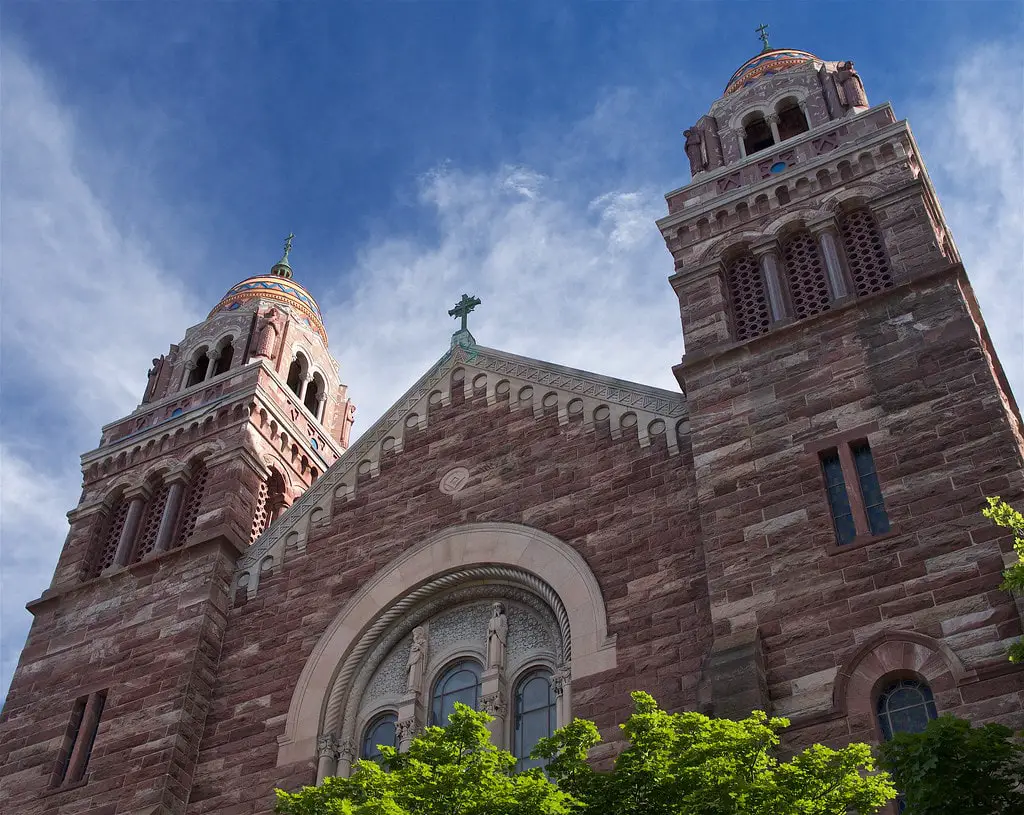
By July 1864, Father Thiele arrived and began constructing a larger church. This new structure was designed to be the Cathedral and was based on a Gothic frame with a stone foundation. Bishop Baraga laid the cornerstone and dedicated the church to Saint Peter, the Apostle, in 1866.
The construction cost was $12,000 - a considerable sum, especially considering the challenges of heating the building during the harsh Michigan winters.
The first St. Peter Cathedral was an ambitious project, and its construction was a community effort. Despite the difficulties, such as the lack of proper insulation that made heating almost impossible in zero weather, the building stood as a testament to the community's faith and commitment. It was a place where people could unite for spiritual nourishment and as a united community.
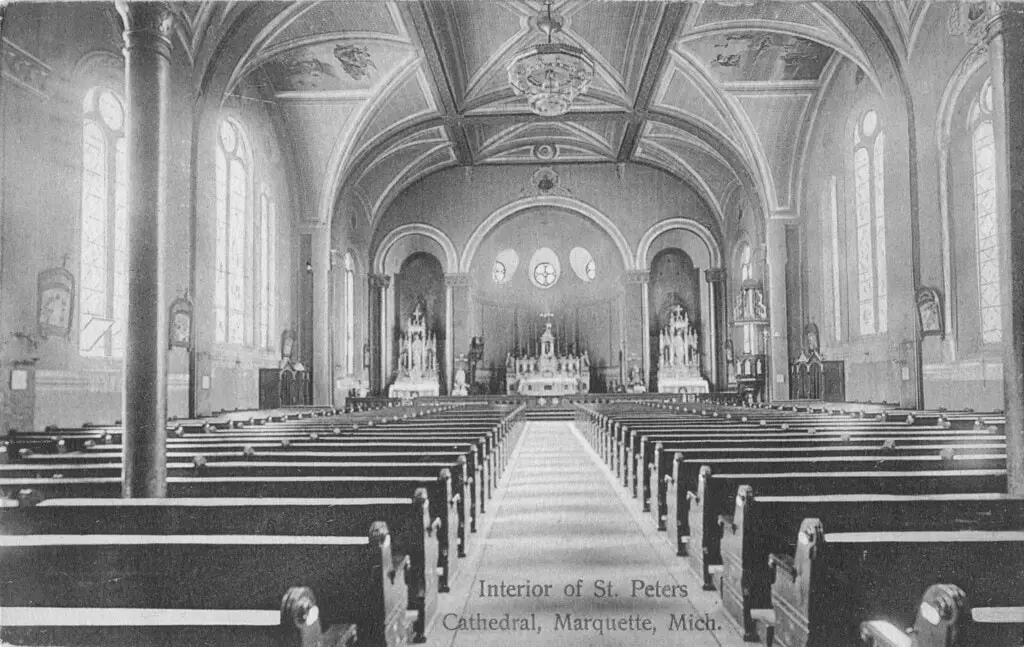
Fires and Rebuilding
However, not all was smooth sailing for St. Peter Cathedral. In 1879, a devastating fire engulfed the structure. The blaze was suspected to have been set by some parishioners, presumably as an act of vengeance for Father Kenny's removal.
Bishop Vertin, who had just been consecrated, returned from Negaunee to find his Cathedral in flames. It was a dark chapter in the Cathedral's history, but one that would lead to renewal.
After the fire, the congregation temporarily moved to the French Church, St. John's, until a new Cathedral could be built. The cornerstone for this new structure was laid on June 19, 1881. During this period, the community's resilience shone through. Despite the destruction and the rebuilding challenges, the community's spirit remained unbroken.
The new sandstone St. Peter Cathedral was finally consecrated on July 27, 1890. It was a momentous occasion, marking the end of a difficult period and the beginning of a new chapter. The Cathedral had risen, quite literally, from the ashes and stood as a symbol of the community's enduring faith and resilience.
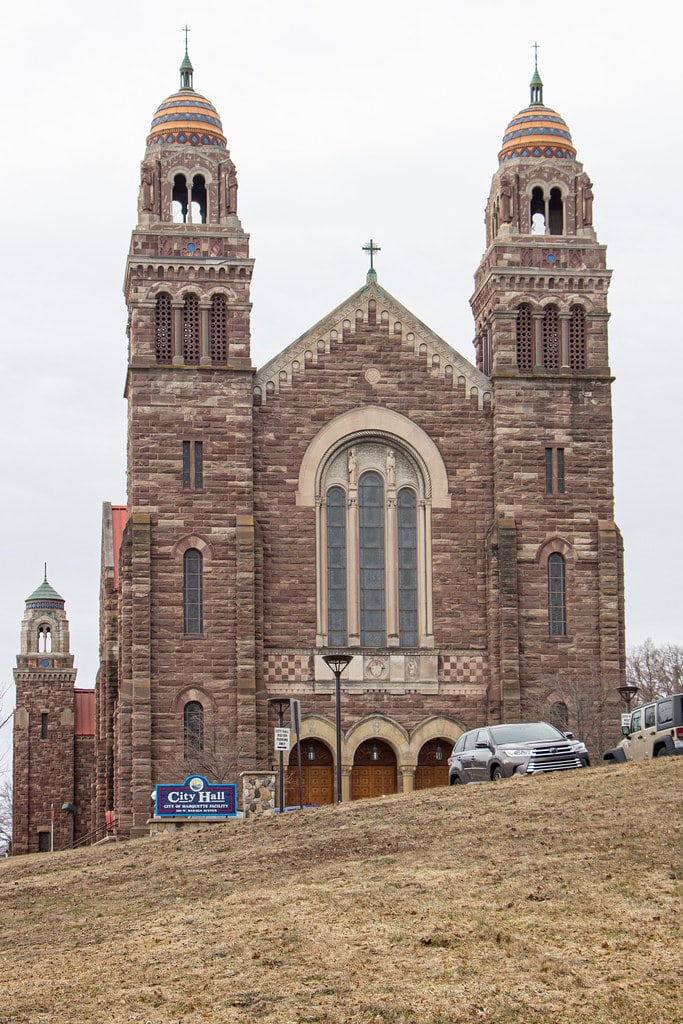
The 20th Century and Architectural Changes
As the years passed, St. Peter Cathedral underwent several changes in its physical structure. The 20th century brought about significant architectural changes. For instance, a new rectory was built next to the Cathedral.
Marble altars were added, enhancing the interior's aesthetic appeal. However, the Cathedral faced challenges, too, especially regarding heating during winter months. The original construction had skipped the sheeting under the siding, making it almost impossible to heat the church adequately.
In the 1960s, the St. Peter Cathedral underwent alterations to align with the liturgical changes brought about by the Vatican II Council. The High Altar was no longer used, and a wooden altar facing the congregation was introduced. While perhaps controversial for some, these changes were part of the Cathedral's ongoing evolution, reflecting the broader shifts within the Catholic Church at the time.
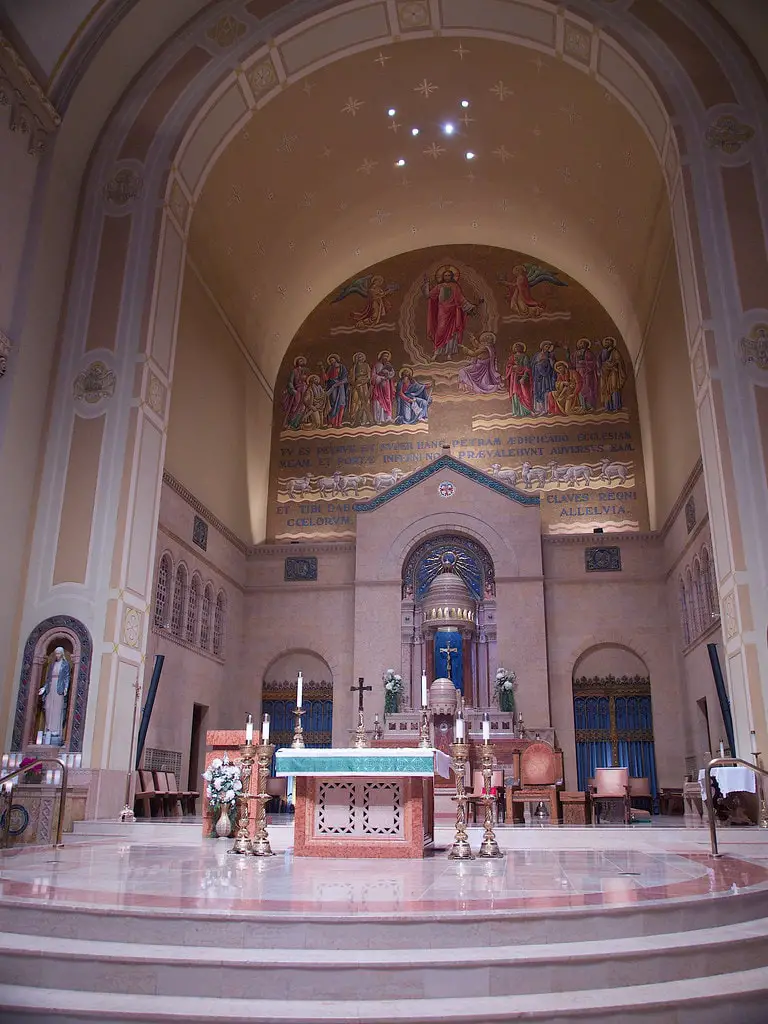
The Modern Era
Fast forward to today, and St. Peter Cathedral continues to be a vibrant community hub. It's not just a place for Sunday Mass; it's a living, breathing entity that evolves with the times. Recent renovations have aimed to enhance the Cathedral's beauty while updating it according to new liturgical directives.
St. Peter Cathedral hosts two Masses each weekday and four additional weekend Masses. The Cathedral also provides guided tours and frequently organizes special Masses, devotional activities, and musical events, particularly during Holy Days and other significant holidays. It's a place that welcomes everyone, from lifelong parishioners to tourists exploring Marquette for the first time.
The Cathedral's role in the community extends beyond the spiritual. It's a place where people come together for various events, from Hearts of Mercy Prayer Groups to St. Vincent de Paul meetings. It's a cornerstone of the community, literally and metaphorically, serving as a gathering place for people from all walks of life.
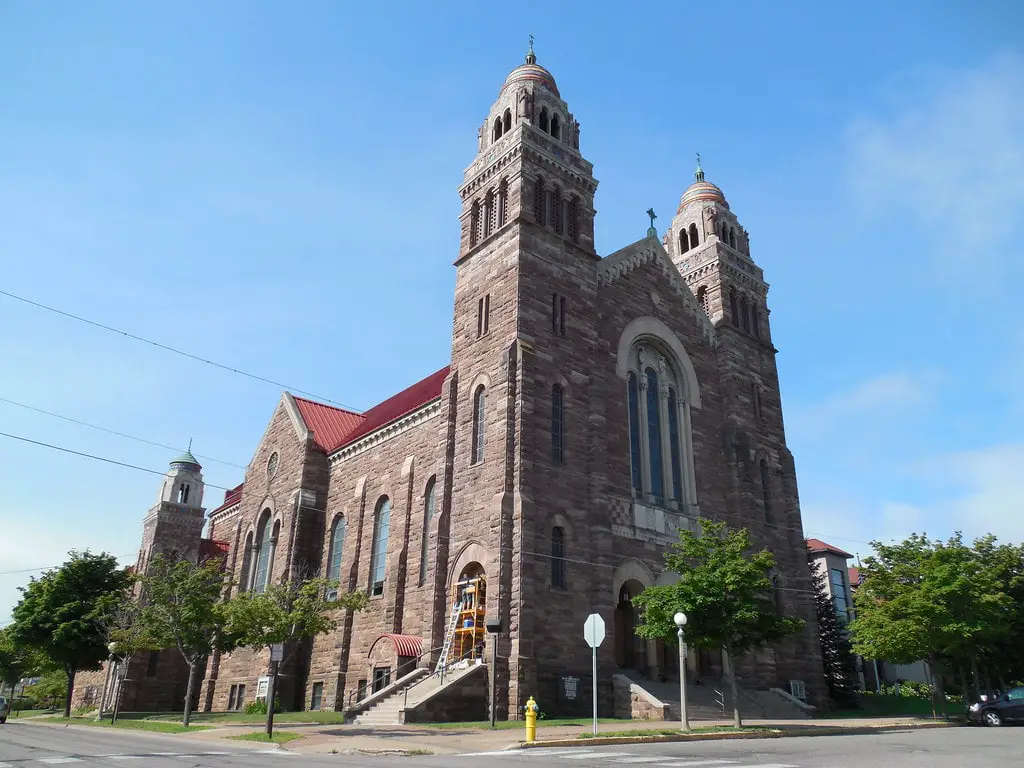
The St. Peter Cathedral in the News
Even in the age of social media and 24/7 news cycles, St. Peter Cathedral makes headlines. Recent news articles have highlighted renovations and special events, adding another layer to its rich history. While the Cathedral doesn't chase the spotlight, its activities and community involvement often garner media attention.
The Cathedral's social media presence is also noteworthy. With a dedicated Facebook page and regular updates, it keeps the community informed and engaged. It's not just about announcing Mass schedules or special events; it's about fostering a sense of community and belonging among its members.
In today's world, where religious institutions often find themselves at the center of social and political debates, St. Peter Cathedral stands as a beacon of unity and faith. It's a place that welcomes everyone, regardless of their beliefs or backgrounds, and offers a sanctuary in the truest sense of the word.
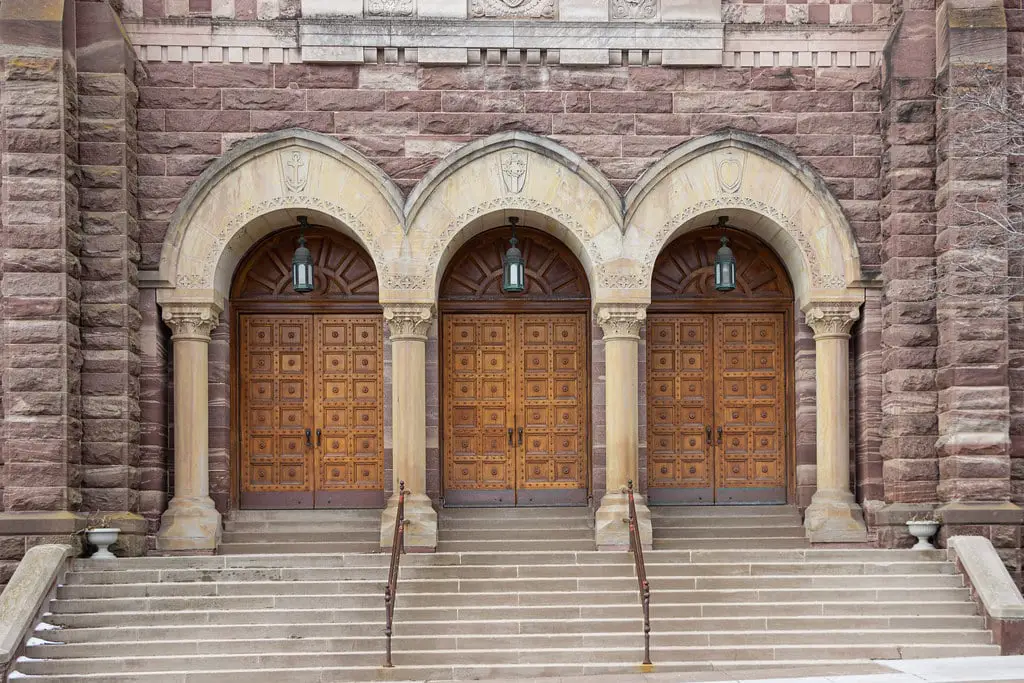
Conclusion
St. Peter Cathedral is more than just a building; it's a living monument to Marquette, Michigan's faith, resilience, and community spirit. The Cathedral has witnessed many events and transformations, from its initial location in a simple log cabin to its present-day recognition as a National Historic Landmark. Fires, renovations, and leadership changes have only strengthened its physical and spiritual foundations.
As one walks through the Cathedral's doors, there's a sense of stepping into a different realm where time slows down, and the worries of the outside world fade away. It's a sanctuary that has stood the test of time, continually evolving while staying true to its foundational values.
So, the next time you find yourself in Marquette, take a moment to visit this storied Cathedral. Whether you're there for a Mass, a tour, or to soak in its tranquil atmosphere, you'll leave with a sense of peace and a newfound appreciation for this remarkable community landmark.
